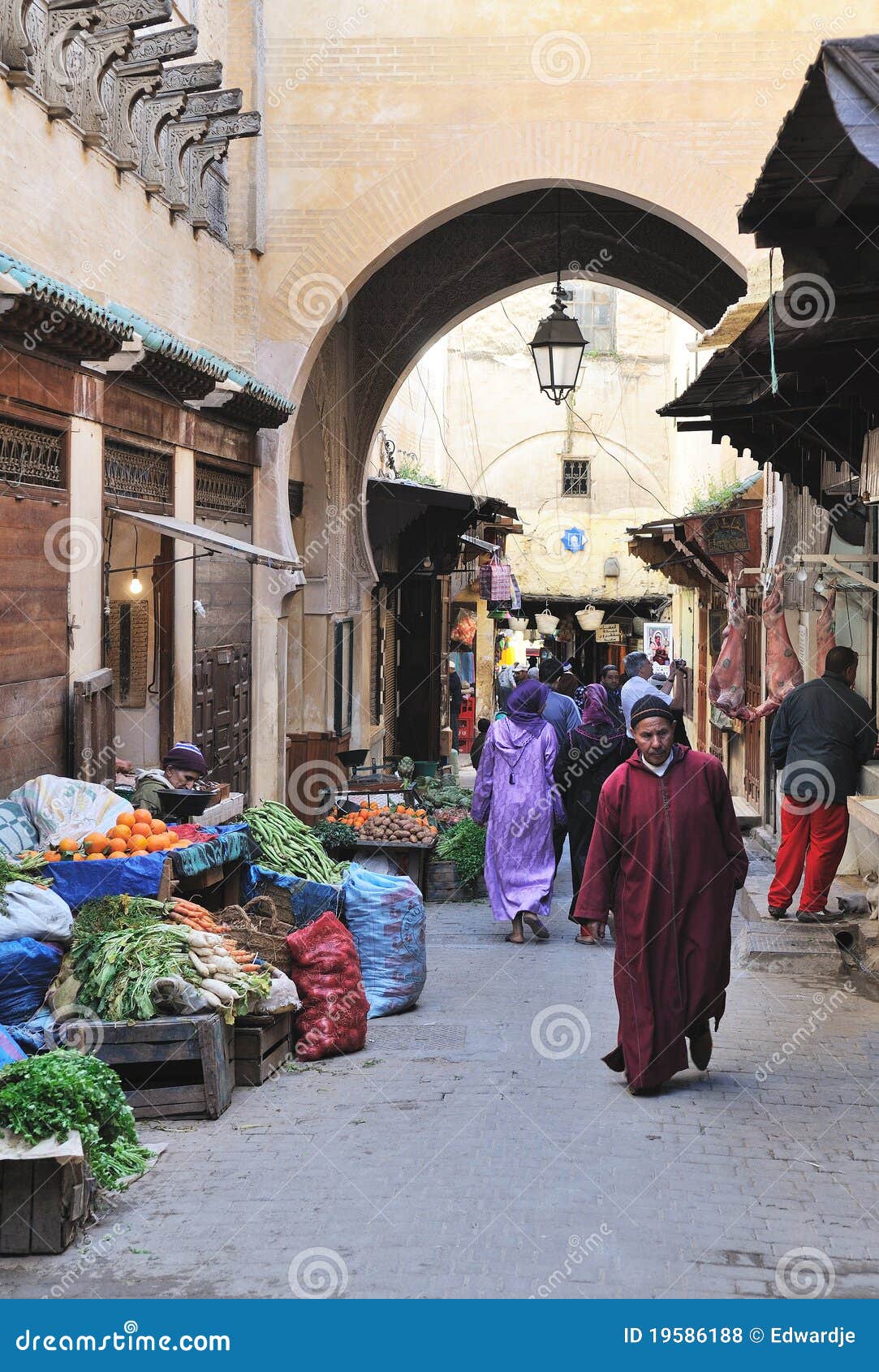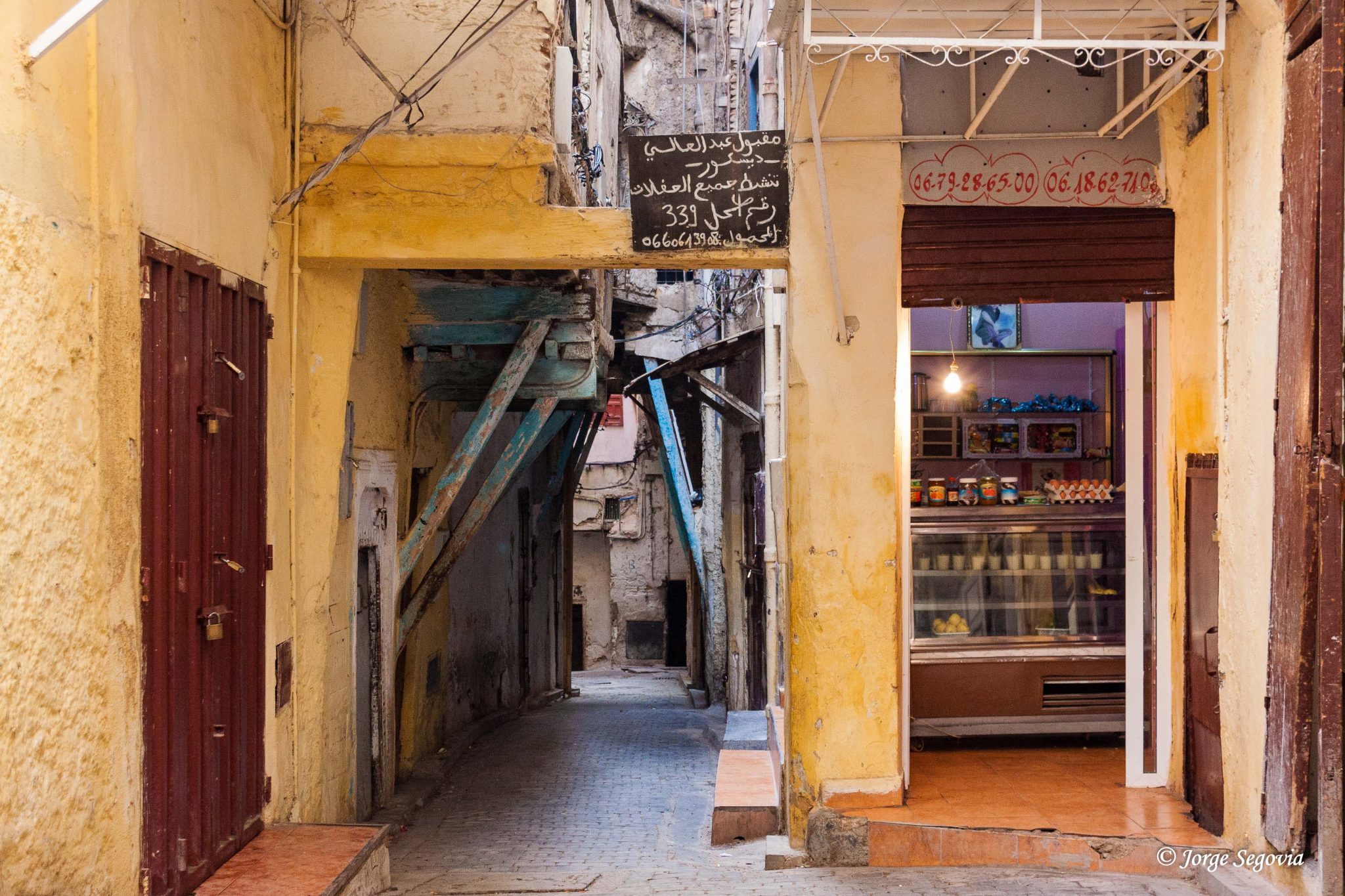

It is ensured by qualified workmanship carrying out restorations in accordance with standards in force. The authenticity of the inner urban structure and of the monuments remains intact. The ramparts, the Koutoubia Mosque, the kasbah, the Saâdians tombs, the ruins of Badiâ Palace, Menara water feature and pavilion, are examples of many monuments that clearly reflect the Outstanding Universal Value of the property. Nevertheless, the integrity of the property is vulnerable due to pressure from urban development, uncontrolled alterations to upper floors and construction materials of the houses, the abandonment of the Khettaras (underground drainage galleries) and exploitation of the palm groves.

A revision of these boundaries is envisaged for increased protection of the surroundings of the property. The boundary of the property inscribed on the World Heritage List is correctly defined by the original ramparts that enclose all the requisite architectural and urban attributes for recognition of its Outstanding Universal Value. Capital of the Merinids, Fès Jedid (the New town), integral part of the Medina of Fez, inscribed in 1981 on the World Heritage List, is an adaptation of the earlier urban model of Marrakesh.Ĭriterion (iv): Marrakesh, which gave its name to the Moroccan empire, is a completed example of a major Islamic capital of the western Mediterranean.Ĭriterion (v): In the 700 hectares of the Medina, the ancient habitat, rendered vulnerable due to demographic change, represents an outstanding example of a living historic town with its tangle of lanes, its houses, souks, fondouks, artisanal activities and traditional trades. Due to its still protected, original and well conserved conception, its construction materials and decoration in constant use, and its natural environment (notably the Gardens of Aguedal, Ménara and the Palm Grove (Palmeraie) the plantation of which is attributed to the Almoravids), the Medina of Marrakesh possesses all its initial components both cultural and natural that illustrate its Outstanding Universal Value.Ĭriterion (i): Marrakesh contains an impressive number of masterpieces of architecture and art (ramparts and monumental gates, Koutoubia Mosque, Saâdians tombs, ruins of the Badiâ Palace, Bahia Palace, Ménara water feature and pavilion) each one of which could justify, alone, a recognition of Outstanding Universal Value.Ĭriterion (ii): The capital of the Almoravids and the Almohads has played a decisive role in medieval urban development. Jamaâ El Fna Square, inscribed on the Representative List of the Intangible Cultural Heritage, is a true open-air theatre that always amazes visitors. Later, the town welcomed other marvels, such as the Badiâ Palace, the Ben Youssef merdersa, les Saâdians tombs, Bahia Palace and large residences. Vast monuments dating back to that period: Koutoubia Mosque, with the matchless minaret of 77 metres, an essential monument of Muslim architecture, is one of the important landmarks of the urban landscape and the symbol of the City, the Kasbah, ramparts, monumental gates and gardens. Outstanding Universal Value Brief synthesisįounded in 1070-1072 by the Almoravids (1056-1147), capital of the Almohads (1147-1269), Marrakesh was, for a long time, a major political, economic and cultural centre of the western Muslim world, reigning in North Africa and Andalusia.


 0 kommentar(er)
0 kommentar(er)
